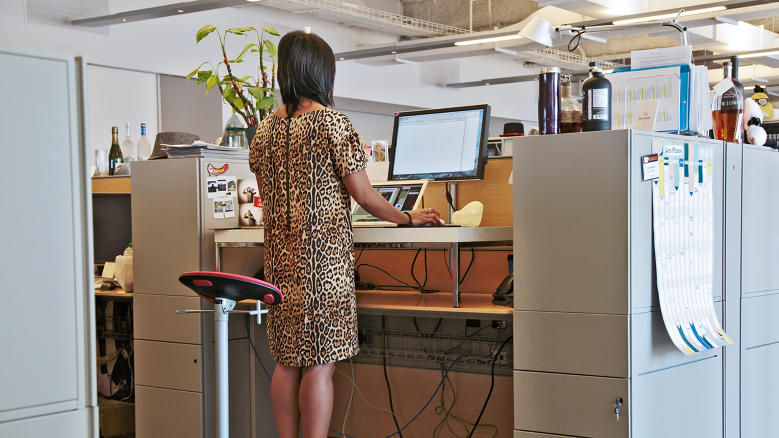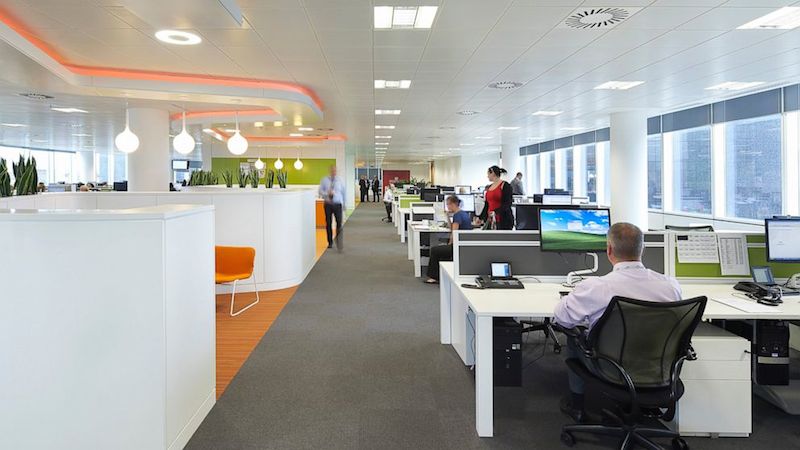It’s no exaggeration to say that many office workers spend more time sitting at a desk than they do at home these days. With the standard 9 to 5 office hours rapidly becoming extinct, it is not uncommon for workers to sit for up to 15-hours each day. Studies have shown that the average Australian sits 10-hours per day including 7.7-hours at work, and the remainder ploughing through emails, eating or catching up on social media at home. So how are these types of patterns important for your medical history?
During your first consultation at Melbourne Osteopathy Sports Injury Centre you may have noticed that our practitioners ask many questions about your work habits – your desk set up, type of chair, position of your screens and how frequently you take micro-breaks. For many of us, our office desk is where we spend the largest portion of our day so it is logical that it should not only be comfortable but also tailored to your needs.
Most of us will catch ourselves slumping in our chairs by mid morning, perhaps leaning into the screen to read emails, or resting on our elbows in a desperate attempt to stay awake. All of these activities impact your musculoskeletal system and may even predispose you to injury. For example, using two screens at work with one slightly off-centre to your left, you may find yourself repetitively twisting your head and body to look at that second screen – perhaps even up to 100 times a day.
How does this impact your posture? If you are moving only your head to look at this screen, you are repeatedly overloading the muscles on your left side of your neck and subsequently lengthening the ones on your right. The implication? A simple task such as doing a head check in the car, may result in a nasty facet sprain in your neck, or picking up your shopping bags may even cause a shoulder or rib injury purely because you have weakened these structures by sitting in a poor posture.
It is simply not enough to say your screen is at a height to allow your eyes to hit the top third, or to set your chair height so your feet are flat on the ground. If you are constantly moving in poorly developed habits throughout the day while seated, you are opening up a can of worms for future injuries.
Most of us are aware of the studies showing increased time spent sitting increases the risk of diabetes and heart disease. But how many of us have thought about the implications on our muscles and joints? By asking in-depth questions surrounding your work posture and habits, Osteopaths can start to educate you on ways to prevent your injuries from occurring again.
For most desk workers, I always recommend taking a break every 20-minutes, even if only standing up and rolling your shoulders a few times before sitting back down. This small movement is enough to reset your postural muscles and improve your posture once you sit down again. Having an appropriate ergonomist do an assessment of your workstation is also a great idea, and many companies now offer standing desks, which, when used correctly, can be of great benefit in reducing further injuries caused by sitting too long.
So next time you sit down at your desk, try and think about more than simply the implication of slumping into your chair. Keep in mind how you reach to the mouse, how you twist to look at your screens, if you cross your legs, or the period of time you remain in one position. By addressing these areas and working with your Osteopath, you can help prevent many niggly injuries from occurring in the future. It’s important to stay mindful about your workstation setup. After all, most of us spend more time at work than we do in our own beds, so make sure it’s not doing you more damage than good.

Dr Catherine Allison is an experienced Osteopath and competitive triathlete. She has fantastic experience treating all sorts of injuries and can assist you with many posture-related complaints.
If you would like to speak to Dr Catherine Allison or one of our other practitioners about your workstation setup or any other issue, please feel free to ask a question, contact us or email us at:

